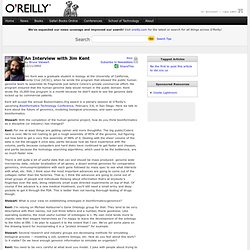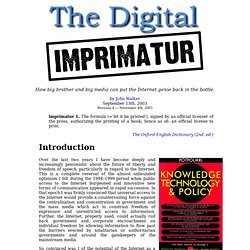

The History of 3D Studio – Gary Yost interview. By Dave Baker, Neil Blevins, Pablo Hadis and Scott Kirvan Foreword In this double feature we have the great pleasure to present you with the history of 3D Studio as related by the head and leader of the Yost Group: Gary Yost himself.

Gary shares his experiences of more than a decade of 3D Studio and 3DS Max development, along with many unique facts and anecdotes gained from his personal perspective as captain of the ship. In addition, he also takes a look at the evolution, current state and future of the CG Industry. For this occasion we are accompanied by the esteemed collaboration of Spanish artist José María De Espona, who had a prominent role in the creation of art that was used by Autodesk for 3D Studio’s promotion.
The Interview - What first attracted you to graphics software development, as opposed to another field of computing? - What made you decide to take Eric Lyons’s offer, jump ship from a comfortable position at Antic, and embark on the development of 3D Studio? An Interview with Jim Kent. By Bruce Stewart 12/11/2002 Jim Kent was a graduate student in biology at the University of California, Santa Cruz (UCSC), when he wrote the program that allowed the public human genome team to assemble its fragments just before Celera's private commercial effort.

His program ensured that the human genome data would remain in the public domain. Kent wrote the 10,000-line program in a month because he didn't want to see the genome data locked up by commercial patents. Kent will accept the annual Bioinormatics.Org award in a plenary session at O'Reilly's upcoming Bioinformatics Technology Conference, February 3-6, in San Diego. Here we talk to Kent about the future of genomics, modeling biological processes, and open source bioinformatics.
Stewart: With the completion of the human genome project, how do you think bioinformatics as a discipline (or industry) has changed? Kent: For me at least things are getting calmer and more thoughtful. Kent: They are very similar in a lot of ways. Inhouse Video. The history of 3d studio gary yost interview. Foreword In this double feature we have the great pleasure to present you with the history of 3D Studio as related by the head and leader of the Yost Group: Gary Yost himself.

Gary shares his experiences of more than a decade of 3D Studio and 3DS Max development, along with many unique facts and anecdotes gained from his personal perspective as captain of the ship. In addition, he also takes a look at the evolution, current state and future of the CG Industry. For this occasion we are accompanied by the esteemed collaboration of Spanish artist José María De Espona, who had a prominent role in the creation of art that was used by Autodesk for 3D Studio’s promotion. José María shares the stories behind the production of some of the images that appear in this article, chosen by Gary Yost, which many 3D Studio / Max users will quickly recognize.
The Interview - What first attracted you to graphics software development, as opposed to another field of computing? This is an interesting story. Fourmilog: None Dare Call It Reason. In 1960, physicist Eugene Wigner wrote an essay titled “The Unreasonable Effectiveness of Mathematics in the Natural Sciences” in which he observed that “the enormous usefulness of mathematics in the natural sciences is something bordering on the mysterious and that there is no rational explanation for it”.

Indeed, each time physics has expanded the horizon of its knowledge from the human scale, whether outward to the planets, stars, and galaxies; or inward to molecules, atoms, nucleons, and quarks it has been found that mathematical theories which precisely model these levels of structure can be found, and that these theories almost always predict new phenomena which are subsequently observed when experiments are performed to look for them. And yet it all seems very odd. The universe seems to obey laws written in the language of mathematics, but when we look at the universe we don't see anything which itself looks like mathematics. The Digital Imprimatur. Imprimatur 1.

The formula (=‘let it be printed’), signed by an official licenser of the press, authorizing the printing of a book; hence as sb. an official license to print. The Oxford English Dictionary (2nd. ed.) Over the last two years I have become deeply and increasingly pessimistic about the future of liberty and freedom of speech, particularly in regard to the Internet. This is a complete reversal of the almost unbounded optimism I felt during the 1994–1999 period when public access to the Internet burgeoned and innovative new forms of communication appeared in rapid succession. In that epoch I was firmly convinced that universal access to the Internet would provide a countervailing force against the centralisation and concentration in government and the mass media which act to constrain freedom of expression and unrestricted access to information.
The Autodesk File.